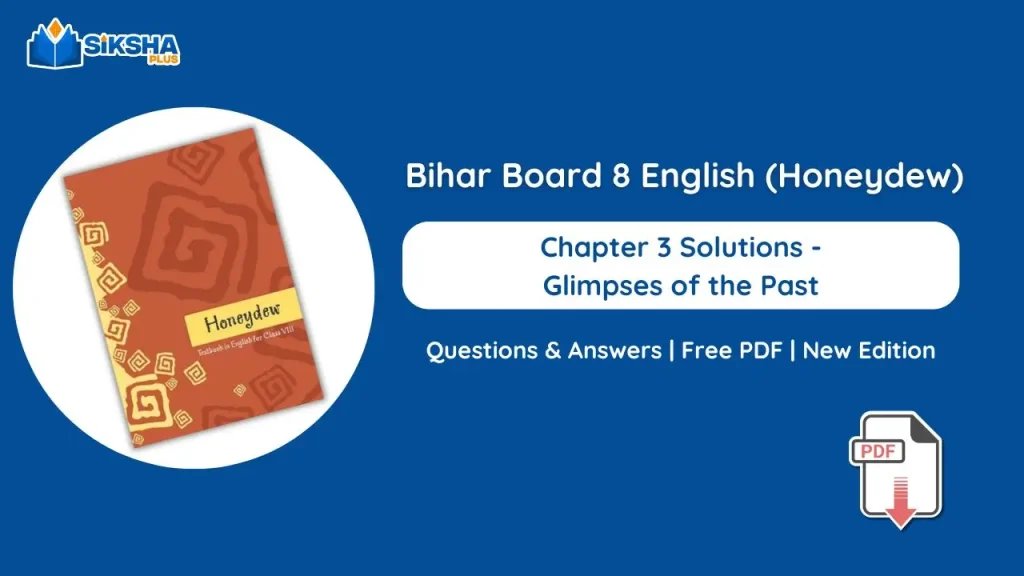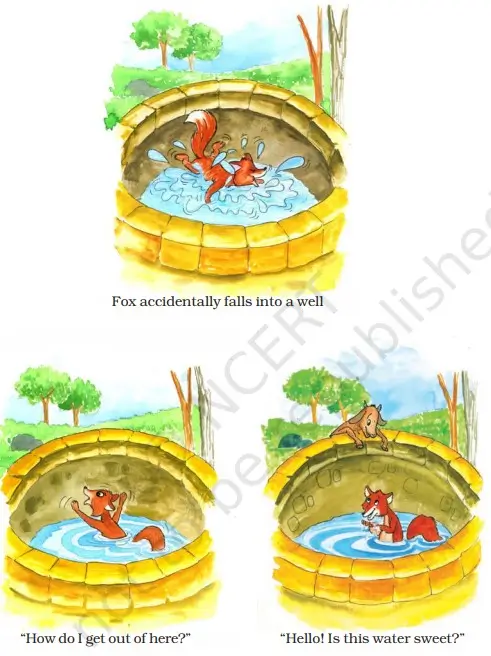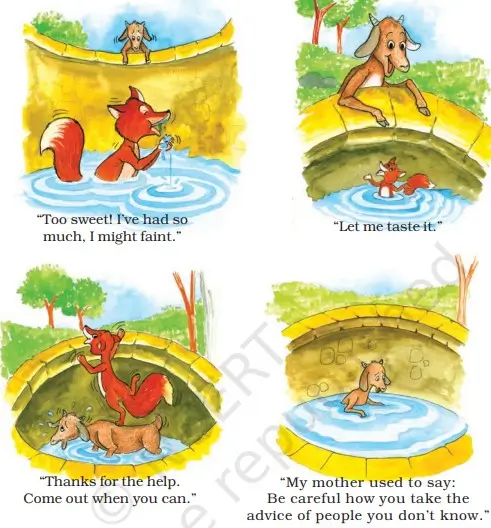If you are searching for Bihar Board Class 8 English Chapter 3 Solutions then you are at the right place. Below we have shared the written solutions with the complete question-answer of chapter 3 – “Glimpses of the Past” for free. This solution is from the new book of class 8 English – Honeydew.
This chapter takes you through India’s history before Independence, showing how the British came for trade but took control. It talks about brave people like Raja Ram Mohan Roy who fought for freedom. Students will learn about India’s struggle and the 1857 Revolt. It helps understand the sacrifices made for our country’s freedom.

Bihar Board Class 8 English Chapter 3 Solutions
Contents
| Chapter | Prose 3. Glimpses of the Past |
| Subject | English (Honeydew) |
| Class | 8th |
| Board | Bihar Board |
COMPREHENSION CHECK
From Page No. 45
1. Look at picture 1 and recall the opening lines of the original song in Hindi. Who is the singer? Who else do you see in this picture?
Ans: The song starts with “Ae mere watan ke logon, zara aankh mein bhar lo paani…” The singer is Lata Mangeshkar. In the picture, you can see Pandit Jawaharlal Nehru, Lal Bahadur Shastri, Indira Gandhi, Bahadur Shah Zafar, Rani Laxmi Bai, Bal Gangadhar Tilak, Lala Lajpat Rai, Bhagat Singh, Subhash Chandra Bose, and Mahatma Gandhi.
2. In picture 2 what do you understand by the Company’s “superior weapons”?
Ans: The Company’s “superior weapons” mean the advanced guns, cannons, and other military equipment used by the British East India Company. These were more powerful than the weapons used by Indian rulers, giving the British an advantage in battles.
3. Who is an artisan? Why do you think the artisans suffered? (picture 3)
Ans: An artisan is a person who makes things by hand, like pots, clothes, or jewelry, using their skills. Artisans suffered because the British charged them very high taxes, which made it hard for them to earn a living. Also, the British brought cheap, machine-made goods from England to sell in India. These goods were sold at lower prices, so people stopped buying the artisans’ handmade items, ruining their business.
4. Which picture, according to you, reveals the first sparks of the fire of revolt?
Ans: Picture 7, titled ‘The Sparks,’ shows the first signs of the revolt against the British. It captures the growing anger among Indians, which later led to the 1857 War of Independence.
WORKING WITH THE TEXT
Answer the following questions.
1. Do you think the Indian princes were short-sighted in their approach to the events of 1757?
Ans: Yes, the Indian princes were short-sighted in 1757. They didn’t see that the British were tricking them. The British used a “divide-and-rule” plan, making the princes fight each other instead of uniting against the British. The princes trusted the British too much and didn’t resist their growing control, which helped the British take over India step by step.
2. How did the East India Company subdue the Indian princes?
Ans: The East India Company took advantage of the fights between Indian princes. The princes often asked the British for help in their battles against each other. This made it easy for the British to gain power. By supporting one prince against another, the Company weakened all of them and slowly took control over their lands.
3. Quote the words used by Ram Mohan Roy to say that every religion teaches the same principles.
Ans: Ram Mohan Roy told his wife, “Cows are of different colours, but the milk they give is the same. Different teachers have different opinions, but the essence of every religion is the same.”
4. In what ways did the British officers exploit Indians?
Ans: The British exploited Indians in many ways:
- They forced farmers to pay heavy taxes, leaving them with little money.
- They made farmers grow crops like cotton and indigo, which the British sold for profit.
- They removed taxes on British machine-made goods, so these were cheaper than Indian handmade goods. This destroyed the business of Indian artisans.
- In some cases, they cut off the thumbs of skilled artisans to stop them from making goods that could compete with British products.
5. Name these people.
(i) The ruler who fought pitched battles against the British and died fighting.
Ans: Kunwar Singh.
(ii) The person who wanted to reform the society.
Ans: Ram Mohan Roy.
(iii) The person who recommended the introduction of English education in India.
Ans: Lord Macaulay.
(iv) Two popular leaders who led the revolt (Choices may vary.)
Ans: Maulvi Ahmadullah of Faizabad and Peshwa Nana Saheb.
6. Mention the following.
(i) Two examples of social practices prevailing then.
Ans:
- Untouchability: Some people were treated as inferior and not allowed to touch others or enter certain places.
- Child marriage: Young girls and boys were married off at a very early age.
(ii) Two oppressive policies of the British.
Ans:
- The British removed taxes on goods made in England, which hurt Indian businesses by flooding the market with cheap British products.
- They forced Indian farmers to grow cash crops like indigo instead of food, causing hunger and poverty.
(iii) Two ways in which common people suffered.
Ans:
- Many people lost their jobs and lands because of British policies.
- The British tried to convert Indians to Christianity, which upset their religious beliefs and traditions.
(iv) Four reasons for the discontent that led to the 1857 War of Independence.
Ans:
- Indians felt like slaves in their own country under British rule.
- The British destroyed Indian industries by selling cheap machine-made goods.
- Indians were treated unfairly compared to the British, with lower pay and fewer opportunities.
- The use of cow and pig fat in bullet cartridges hurt Indian religious beliefs, as these animals were sacred or forbidden.
WORKING WITH LANGUAGE
1. Change the following sentences into indirect speech.
(i) First man: We must educate our brothers.
Second man: And try to improve their material conditions.
Third man: For that we must convey our grievances to the British Parliament.
Ans:
The first man said that they must educate their brothers.
The second man added that they should try to improve their material conditions.
The third man suggested that they should convey their grievances to the British Parliament.
(ii) First soldier: The white soldier gets huge pay, mansions, and servants.
Second soldier: We get a pittance and slow promotions.
Third soldier: Who are the British to abolish our customs?
Ans:
The first soldier said that the white soldier got huge pay, mansions, and servants.
The second soldier remarked that they got very little pay and slow promotions.
The third soldier asked who the British were to abolish their customs.
SPEAKING AND WRITING
1. Playact the role of farmers who have grievances against the policies of the government. Rewrite their ‘speech bubbles’ in dialogue form first.
Ans:
Farmer 1: Why are you taking all our crops? We have nothing left to eat!
Farmer 2: Your taxes are too high! We can’t afford to live like this.
Farmer 3: Our handmade goods are not selling because of your cheap British products. Stop ruining our lives!
Dialogue form:
Farmer 1: “Sir, why are you taking all our crops? We’re left with nothing to eat!”
Farmer 2: “Your taxes are so high that we can’t afford to live anymore!”
Farmer 3: “Our handmade goods aren’t selling because your cheap British products are flooding the market. Please stop ruining our lives!”
2. Look at the pictures.


(i) Ask one another questions about the pictures.
Where is the fox?
Ans: The fox is stuck inside a well.
How did it happen?
Ans: The fox fell into the well by mistake while roaming around.
What is the fox thinking?
Ans: The fox is thinking about how to escape from the well.
What does she want to know?
Ans: The fox wants to know if the goat thinks the water in the well is sweet.
What happens next?
Ans: The goat jumps into the well to taste the water.
Where is the fox now?
Ans: The fox is out of the well, standing on the ground.
Who is the visitor?
Ans: The visitor is a goat who comes near the well.
What is the fox’s reply?
Ans: The fox says the water is very sweet and that she drank a lot of it.
Where is the goat?
Ans: The goat is now stuck inside the well after jumping in.
What is the goat thinking?
Ans: The goat is thinking about her mother’s advice to never trust strangers.
(ii) Write the story in your own words. Give it a title.
Ans: Title: The Clever Fox and the Trusting Goat
One day, a fox was walking near a well and accidentally fell into it. She couldn’t climb out and started thinking of a way to escape. Soon, a goat passed by and saw the fox in the well. The goat asked, “Is the water sweet?” The clever fox lied, saying, “Oh, it’s very sweet! I’ve had so much of it. Come down and try it!”
The foolish goat believed the fox and jumped into the well to taste the water. As soon as the goat was in the well, the fox climbed onto the goat’s back and jumped out. The fox thanked the goat and ran away, leaving the goat stuck in the well. The goat realized her mistake and remembered her mother’s warning: “Never trust a stranger!”
